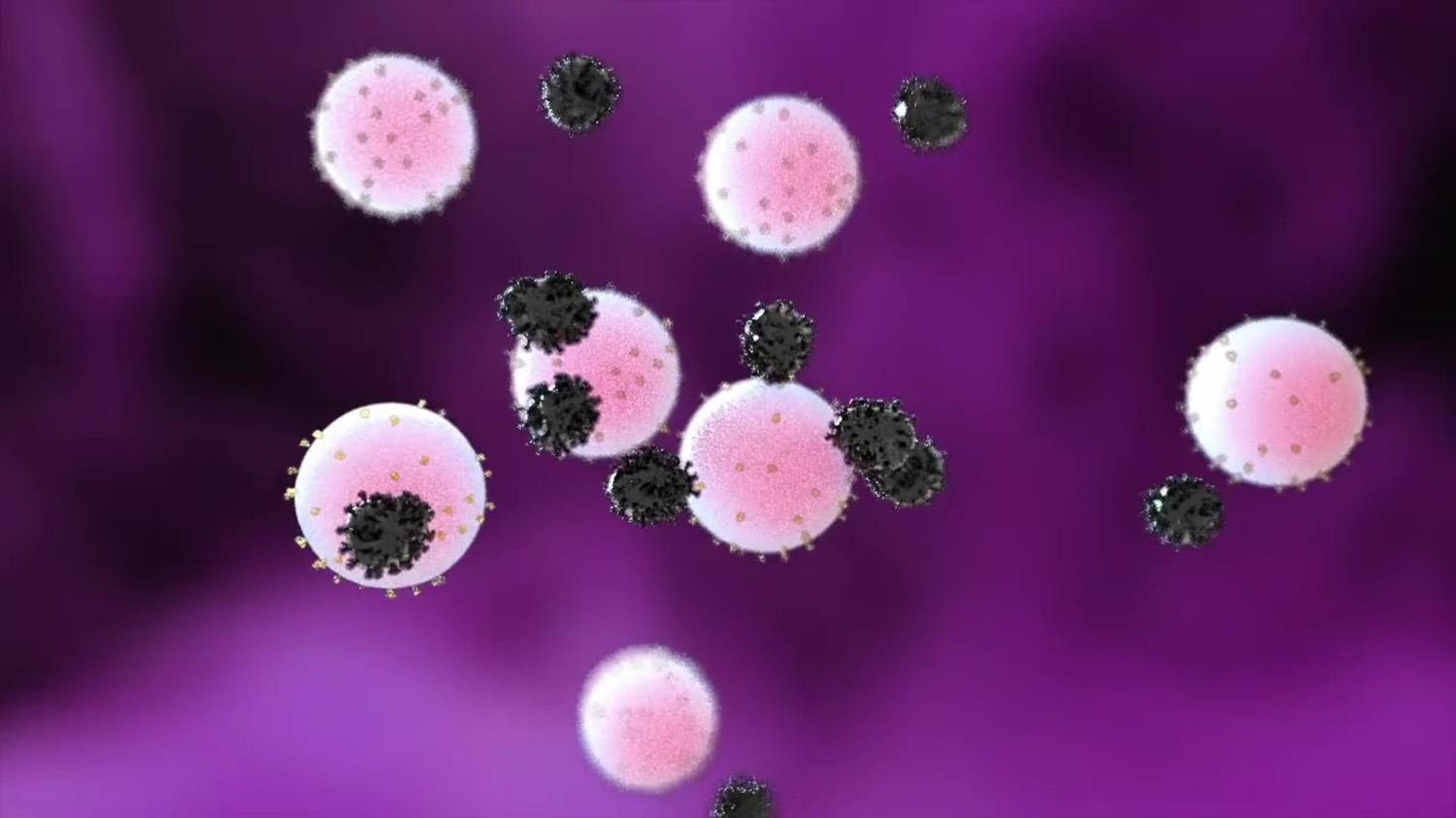Jun 18 2021
Nanodecoys are made from human lung spheroid cells (LSCs). They bind and neutralize the SARS-CoV-2 virus, promoting viral clearance and reducing injury to the lungs in a COVID-19 macaque model.
 Nanodecoys bind with the SARS-CoV-2 virus. Image Credit: North Carolina State University.
Nanodecoys bind with the SARS-CoV-2 virus. Image Credit: North Carolina State University.
Nanodecoy therapy mimics the receptor where the virus binds and thus targets the virus itself. This therapy could be effective against the emerging virus variants.
SARS-CoV-2 penetrates a cell when its spike protein is binding to the angiotensin-converting enzyme 2 (ACE2) receptor found on the surface of the cell. LSCs — a natural combination of lung epithelial stem cells and mesenchymal cells — also express ACE2. This makes them a perfect vehicle to trick the virus.
If you think of the spike protein as a key and the cell’s ACE2 receptor as a lock, then what we are doing with the nanodecoys is overwhelming the virus with fake locks so that it cannot find the ones that let it enter lung cells. The fake locks bind and trap the virus, preventing it from infecting cells and replicating, and the body’s immune system takes care of the rest.
Ke Cheng, Randall B. Terry Jr. Distinguished Professor in Regenerative Medicine, North Carolina State University
Cheng is also a professor in the Joint Department of Biomedical Engineering, North Carolina State University (NC State)/UNC-Chapel Hill, and the corresponding author of the study.
Cheng and work colleagues from the NC State and UNC-CH transformed LSCs into nanovesicles or tiny cell membrane bubbles with ACE2 receptors as well as other lung cell-specific proteins on the surface.
The researchers confirmed that the spike protein indeed adheres to the ACE2 receptors on the decoys in vitro. They subsequently used a fabricated SARS-Co-V-2 mimicking virus for in vivo testing in a mouse model and delivered the decoys with the help of inhalation therapy. However, the nanodecoys remained in the lungs of the mice for 72 hours after one dose and helped in quickly clearing the mimicking virus.
Later, a contract research organization performed a pilot study in a macaque model and observed that inhalation therapy employing nanodecoys not only accelerated the viral clearance but also reduced fibrosis and inflammation in the lungs. No toxicity was noted in both the mouse and macaque study, but more research is needed to translate this treatment for human testing and precisely find out how the nanodecoys are cleared by the body.
These nanodecoys are essentially cell ‘ghosts,’ and one LSC can generate around 11,000 of them. Deploying millions of these decoys exponentially increases the surface area of fake binding sites for trapping the virus, and their small size basically turns them into little bite-sized snacks for macrophages, so they are cleared very efficiently.
Ke Cheng, Randall B. Terry Jr. Distinguished Professor in Regenerative Medicine, North Carolina State University
The researchers pointed out the other three advantages of the LSC nanodecoys. First, non-invasive delivery of nanodecoys to the lungs through inhalation therapy is possible. Second, the nanodecoys are acellular, which means nothing lives inside, so they can be preserved easily and can remain stable for a longer time, allowing off-the-shelf use. Finally, LSCs are already being used in other clinical trials and, therefore, are more likely to be used in the near future.
By focusing on the body’s defenses rather than a virus that will keep mutating we have the potential to create a therapy that will be useful long-term. As long as the virus needs to enter the lung cell, we can keep tricking it.
Ke Cheng, Randall B. Terry Jr. Distinguished Professor in Regenerative Medicine, North Carolina State University
The study was published in the Nature Nanotechnology journal and was funded by the National Institutes of Health and the American Heart Association. Dr. Jason Lobo, a pulmonologist at UNC-CH, is the co-author of the study.
Video Credit: North Carolina State University.
Journal Reference:
Li, Z., et al. (2021) Cell-Mimicking Nanodecoys Neutralize SARS-CoV-2 and Mitigate Lung Injury in a Nonhuman Primate Model of COVID-19. Nature Nanotechnology. doi.org/ 10.1038/s41565-021-00923-2.